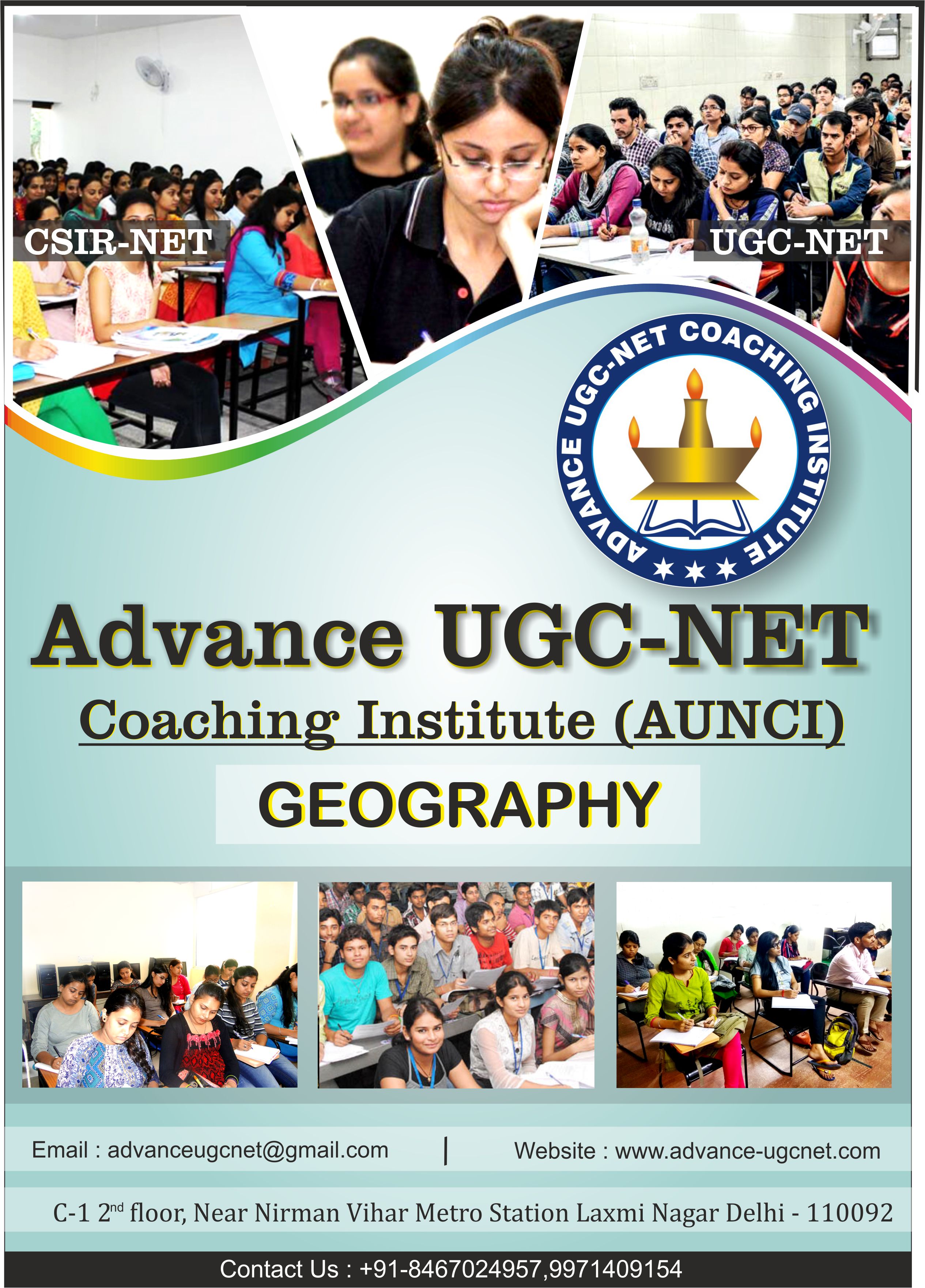Advance Online Ugc NET Jrf Geography in Delhi and kolkata

Greetings UGC NET Aspirants! 😊
Advance UGC NET JRF Geography Coaching is the study of the environment, nature, and society, encompassing the physical features of the Earth, the distribution of populations and resources, as well as political and economic activities.
If you are interested in a promising career in Geography, pursuing the **UGC NET** exam after completing your post-graduate studies is a great option. This will help you become a lecturer, researcher, or a senior employee in a prestigious government or private organization.We are here to assist you in cracking the exam with our comprehensive study materials and expert guidance.
---Question Paper Pattern:
Paper I
- Total Questions**: 50
- Marks per Question**: 2
- Total Marks**: 100
- Type of Questions**: Objective type (MCQs, True/False, Assertion-Reasoning)
- All questions are compulsory
- No Negative Marking
- Total Questions: 100
- Marks per Question: 2
- Total Marks: 200
- Type of Questions**: Objective type (MCQs, True/False, Assertion-Reasoning)
- All questions are compulsory**
- No Negative Marking
Time Duration of exam:
paper I : 60 Minutes ; paper IInd : 120 Minutes ;The UGC NET Geography Syllabus is mentioned in detail in the following table. The candidates check out the table thoroughly to understand the depth and breadth of the UGC NET Geography Syllabus in its entirety.
| Online Ugc NET Jrf Geography Syllabus | |
|---|---|
| Unit | Syllabus |
| UNIT I : Geomorphology | Continental Drift, Plate Tectonics, Endogenetic and Exogenetic forces. Denudation and Weathering, Geomorphic Cycle (Davis and Penck). |
| UNIT II : Climatology | Composition and Structure of Atmosphere; Insolation, Heat Budget of Earth, Temperature, Pressure and Winds, Atmospheric Circulation (air-masses, fronts and upper air circulation, cyclones and anticyclones (tropical and temperate). |
| UNIT III : Oceanography | Relief of Oceans, Composition: Temperature, Density and Salinity, Circulation: Warm and Cold Currents, Waves, Tides, Sea Level Changes, Hazards: Tsunami and Cyclone |
| UNIT IV : Geography of Environment |
|
| UNIT V: Population and Settlement Geography |
|
| Unit VI: Geography of Economic Activities and Regional Development |
|
| Unit – VII: Cultural, Social and Political Geography |
|
| Unit VIII: Geographic Thought | Contributions of Greek, Roman, Arab, Chinese and Indian Scholars, Contributions of Geographers (Bernhardus Varenius, Immanuel Kant, Alexander von Humboldt, Carl Ritter, Schaefer & Hartshorne), Impact of Darwinian Theory on Geographical Thought. |
| Unit IX: Geographical Techniques | Sources of Geographic Information and Data (spatial and non-spatial), Types of Maps, Techniques of Map Making (Choropleth, Isarithmic, Dasymetric, Chorochromatic, Flow Maps) Data Representation on Maps (Pie diagrams, Bar diagrams and Line Graph, GIS Database (raster and vector data formats and attribute data formats). |
| Unit X: Geography of India | Major Physiographic Regions and their Characteristics; Drainage System (Himalayan and Peninsular), Climate: Seasonal Weather Characteristics, Climatic Divisions, Indian Monsoon (mechanism and characteristics), Jet Streams and Himalayan Cryosphere, Types and Distribution of Natural Resources: Soil, Vegetation, Water, Mineral and Marine Resources. |

